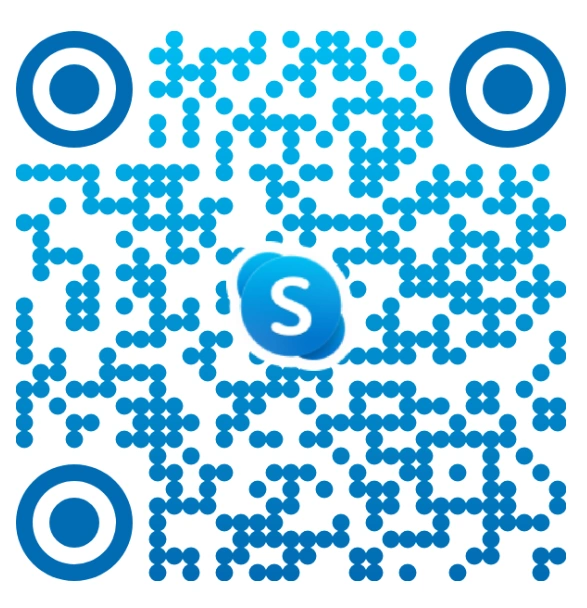Top AI Automation Tools for 2025: Zapier, UiPath, and Beyond
Introduction
AI-driven automation is reshaping the way businesses operate in 2025. Companies are increasingly leveraging intelligent tools to streamline repetitive tasks, boost efficiency, and make smarter decisions. Modern AI automation platforms go far beyond simple workflow management by integrating machine learning, predictive analytics, and natural language processing, enabling businesses to create more adaptive and intelligent processes. Recent studies show that over 65% of enterprises have already adopted some form of AI-powered automation, highlighting its growing importance for staying competitive in today’s fast-paced market.
In this blog, we will explore the top AI automation tools for 2025, including popular platforms like Zapier and UiPath, and provide a comprehensive guide to help you choose the right solutions for your business needs.
What Are AI Automation Tools?
AI automation tools are software platforms that combine artificial intelligence with automation technology to optimize workflows and reduce manual effort. These tools enable AI workflow automation, allowing businesses to process large datasets, make predictions, trigger actions, and even interact with other software systems without human intervention.
AI automation enhances business efficiency by accelerating processes, reducing errors, and enabling teams to focus on strategic tasks. Businesses can implement AI automation in several areas, from repetitive administrative tasks to complex decision-making processes.
The benefits of AI automation include faster operations, reduced operational costs, improved accuracy, and enhanced scalability. Organizations can also leverage AI insights to make data-driven decisions, anticipate bottlenecks, and improve customer experiences.
AI automation is particularly effective when integrated with enterprise systems, as it enables seamless collaboration across teams, departments, and external partners.
Top 10 AI Automation Tools for Businesses in 2025
AI automation tools are transforming the way businesses operate by streamlining repetitive tasks, improving accuracy, and enhancing decision-making. From no-code platforms to advanced RPA and AI-driven enterprise solutions, these tools help organizations save time, reduce errors, and boost operational efficiency. Whether you are managing workflows, customer interactions, or data processing, adopting the right automation tool can optimize performance across departments.
Below is a detailed list of the top AI automation tools in 2025, including their descriptions, pros, cons, and real-world business use cases.
1. Zapier
Zapier is one of the leading AI automation tools and a no-code platform designed to help businesses connect multiple applications and automate repetitive workflows. By using triggers and actions in “Zaps,” users can seamlessly move data between apps, eliminate manual input, and ensure that processes run efficiently without requiring technical expertise or programming skills.
Pros:
- Intuitive interface suitable for non-technical users.
- Integrates with thousands of applications.
- Quick setup for automating routine tasks.
Cons:
- Limited capabilities for highly complex or conditional workflows.
- Costs can rise significantly with high task volumes.
- Some apps have restricted functionality within Zaps.
Use Cases:
- Automatically share new blog posts on social media.
- Sync customer contact data between web forms and CRM systems.
- Create support tickets from incoming emails or chat queries.
2. UiPath
UiPath is a leading Robotic Process Automation (RPA) platform that combines rule-based automation with AI-driven capabilities. It allows enterprises to automate repetitive tasks across applications, including document processing, email handling, and data entry. UiPath also offers AI modules that enhance decision-making and handle unstructured data, making it ideal for large-scale enterprise operations.
Pros:
- Handles both structured and unstructured data using AI.
- Scalable for enterprise-level automation projects.
- Strong community support and extensive learning resources.
Cons:
- Steep learning curve for new users.
- High licensing and implementation costs.
- Requires dedicated IT resources for large deployments.
Use Cases:
- Automating invoice processing in finance departments.
- Employee onboarding by extracting and processing HR documents.
- Customer service automation using chatbots and AI-driven responses.
3. n8n
n8n is an open-source automation platform that enables organizations to automate workflows across applications without coding. It allows conditional logic, data transformation, and complex workflow creation. With self-hosting capabilities, n8n provides flexibility, control, and scalability for businesses looking to implement automation internally while maintaining full ownership of their data.
Pros:
- Open-source and self-hosted options.
- Supports complex workflows with conditional logic.
- Wide integration possibilities with apps and APIs.
Cons:
- Requires technical knowledge for setup and maintenance.
- Support options are limited compared to commercial tools.
- Advanced workflows may need additional configuration.
Use Cases:
- Automating social media campaigns and lead generation.
- Synchronizing data between finance and CRM platforms.
- Automating inventory tracking and reporting in operations.
4. Automation Anywhere
Automation Anywhere is a cloud-native RPA platform that integrates artificial intelligence to enable intelligent automation. It is designed to handle both simple repetitive tasks and complex workflows involving multiple systems. With AI capabilities, it can process unstructured data, perform predictive analytics, and make automated decisions, providing a complete solution for enterprises aiming to streamline business operations.
Pros:
- Cloud-based for easy scalability and deployment.
- AI-enabled automation for advanced decision-making.
- User-friendly drag-and-drop interface for workflow creation.
Cons:
- Expensive for small and mid-sized businesses.
- Training may be required for teams to utilize full features.
- Some advanced functionalities are limited to premium plans.
Use Cases:
- Automating patient data entry in healthcare systems.
- Managing inventory updates and order processing in retail.
- Fraud detection and compliance reporting in banking.
5. Blue Prism
Blue Prism is an enterprise-grade RPA platform focused on secure, scalable, and compliant automation. It emphasizes governance and auditability, making it ideal for highly regulated industries such as finance, insurance, and healthcare. Its AI capabilities allow bots to process semi-structured data, while the platform ensures that workflows remain reliable and traceable across large organizational processes.
Pros:
- Strong security and compliance features.
- Scalable for large enterprise operations.
- Supports complex, multi-step automation workflows.
Cons:
- Requires technical expertise for implementation.
- Higher licensing and maintenance costs.
- Steep learning curve for users unfamiliar with RPA.
Use Cases:
- Claims processing in insurance companies.
- Customer support automation for telecom companies.
- Regulatory compliance reporting in government agencies.
Also Read : How AI Automates Repetitive Tasks and Frees Up Resources
6. Workato
Workato is an integration and automation platform that connects multiple business applications and automates workflows using AI and pre-built connectors. It allows businesses to design complex workflows with conditional logic, data transformations, and automated decision-making. Workato helps organizations synchronize data across systems, eliminate redundant tasks, and enhance operational efficiency.
Pros:
- Supports advanced conditional workflows.
- AI-driven automation and decision-making capabilities.
- Wide range of pre-built integrations with popular apps.
Cons:
- High pricing for smaller organizations.
- Some workflows require technical knowledge to set up.
- Learning curve for advanced features and customization.
Use Cases:
- Syncing e-commerce orders to accounting and shipping platforms.
- Automating lead nurturing and marketing campaigns.
- Reconciling financial accounts and generating reports automatically.
7. Appian
Appian is a low-code automation platform that combines process automation, case management, and AI. It allows organizations to rapidly develop business applications, automate workflows, and make data-driven decisions. With predictive analytics and AI-powered recommendations, Appian helps organizations streamline operational, compliance, and customer-facing processes efficiently. Businesses get support to utilize this platform through low-code and no-code development services.
Pros:
- Rapid application development with a low-code interface.
- AI-enabled workflow optimization and analytics.
- Strong focus on compliance and governance for regulated industries.
Cons:
- Customization may require technical expertise.
- Higher costs for enterprise licenses.
- Smaller organizations may underutilize full platform capabilities.
Use Cases:
- Managing patient care workflows in healthcare organizations.
- Automating loan processing and approvals in banks.
- Streamlining government permit approvals and case management.
8. Integromat (Make)
Integromat, now branded as Make, is a visual AI automation tool for 2025 that allows businesses to create complex workflows using a drag-and-drop interface. It connects apps, automates repetitive tasks, and allows for conditional logic, data transformation, and error handling. Make is popular among SMBs for its flexibility and simplicity, enabling non-technical teams to implement automation efficiently.
Pros:
- Supports conditional logic and complex workflows.
- Intuitive visual interface.
- Integrates with many apps and services.
Cons:
- Limited documentation for advanced features.
- Performance can degrade with very large workflows.
- Some advanced setups require technical knowledge.
Use Cases:
- Automating e-commerce order processing and inventory updates.
- Synchronizing marketing leads and triggering follow-up campaigns.
- Reconciling financial transactions automatically.
9. Microsoft Power Automate
Microsoft Power Automate is a cloud-based tool for automating workflows across Microsoft 365 and other applications. It allows businesses to streamline repetitive tasks, approvals, notifications, and data collection. Its AI capabilities provide predictive recommendations and enable intelligent task routing, making it a powerful tool for organizations that rely heavily on Microsoft services.
Pros:
- Seamless integration with Microsoft products.
- User-friendly templates for quick automation.
- Supports cloud and on-premise data sources.
Cons:
- Some advanced features require premium plans.
- Customization options are limited for complex workflows.
- Performance may vary with very large datasets.
Use Cases:
- Automating HR onboarding and offboarding processes.
- Syncing customer information across Microsoft and third-party apps.
- Automating approval workflows and notification emails.
10. WorkFusion
WorkFusion is a digital workforce platform combining RPA, AI, and machine learning to automate business processes. It enables organizations to deploy both attended and unattended bots for tasks ranging from document processing to analytics. With its AI-powered capabilities, WorkFusion supports AI workflow automation, allowing businesses to handle unstructured data efficiently while improving productivity and operational accuracy.
Pros:
- AI-powered decision-making and automation.
- Supports complex workflows for enterprise needs.
- Offers attended and unattended bot options.
Cons:
- Complex implementation process.
- Licensing costs can be high for smaller businesses.
- Advanced features may require significant training.
Use Cases:
- Automating transaction processing and compliance reporting in finance.
- Managing patient records and billing in healthcare systems.
- Optimizing supply chain and inventory operations in retail
Also Read : AI Workflow Automation: Build Scalable LLM Pipelines Using Agents, APIs, and Orchestration Tools
Comparison of Top AI Automation Tools 2025
To help businesses make informed decisions, here’s a detailed comparison of the top AI automation tools in 2025, including their AI capabilities, integration scope, pricing, and real-world use cases. Let’s discuss the top AI automation tools.
| Tool | Category | AI Features | Pricing | Integration | Use Cases |
| Zapier | No-code | AI triggers, workflow suggestions (Zapier AI features) | Tiered, task-based | 5,000+ apps | Social media posting, CRM sync, support tickets |
| UiPath | RPA | Handles structured & unstructured data (UiPath AI) | Enterprise licensing | ERP, CRM, email, documents | Invoice processing, onboarding, customer service |
| Automation Anywhere | RPA | Intelligent automation, document understanding | Subscription, enterprise | ERP, CRM, finance systems | Banking fraud detection, retail inventory, healthcare data |
| Blue Prism | RPA | Cognitive automation, semi-structured data | Enterprise pricing | ERP, CRM, legacy apps | Insurance claims, regulatory compliance, support |
| Workato | Enterprise | AI-driven decisions, conditional workflows | Enterprise pricing | Cloud & on-prem apps | Order sync, marketing automation, financial reconciliation |
| Appian | Low-code | AI workflow optimization, predictive analytics | Enterprise pricing | ERP, CRM, HR | Customer service, loan approvals, case management |
| Integromat (Make) | No-code | Conditional workflows, AI task handling | Task-based | Multiple apps | Marketing automation, order processing, lead routing |
| Microsoft Power Automate | Low-code | Predictive task recommendations | Subscription, premium tiers | Microsoft 365 + apps | HR workflows, approvals, data sync |
| WorkFusion | Enterprise | AI workflow automation, RPA + ML | Enterprise pricing | ERP, CRM, finance, healthcare | Transaction processing, compliance, supply chain |
| n8n | Open-source | Conditional logic, AI-driven workflows | Free/self-hosted | APIs, flexible integrations | Lead generation, data sync, inventory tracking |
How to Choose the Right AI Automation Tool
Selecting the right AI automation tool requires careful consideration of your organization’s size, objectives, and technical capabilities.
- Assess Business Needs: Identify which workflows require automation, which processes are repetitive, and which tasks involve decision-making that AI can improve.
- Evaluate AI Features: Examine whether the platform offers predictive analytics, intelligent workflow suggestions, or cognitive automation. Consider if AI is embedded or requires additional configuration.
- Check Integration Capabilities: Ensure the platform integrates with existing enterprise systems, databases, cloud apps, and third-party services. The easier the integration, the faster you can deploy automation.
- Consider Scalability: Choose a platform that can grow with your business. Some tools are better suited for small workflows, while others handle enterprise-scale operations.
- Budget and Pricing Models: Review pricing models to understand costs for users, tasks, or workflows. Include potential costs for support, training, and upgrades.
- Implementation Support: Access to experts and professional services can significantly improve adoption speed and ROI.
A systematic evaluation ensures that the selected platform aligns with strategic objectives, delivers measurable outcomes, and utilizes AI automation services.
Also Read : AI in Business Process Automation: A Complete Guide
Future Trends in AI Automation Tools 2025
The landscape of AI automation is evolving rapidly. Here are key trends to watch in 2025:
- Generative AI Integration: Tools are expected to leverage generative AI to create content, draft communications, or generate insights from complex data sets.
- Smarter Workflow Suggestions: AI will recommend optimization strategies, flag bottlenecks, and even automatically redesign workflows for maximum efficiency.
- Cross-Platform Automation: Unified platforms will allow seamless automation across multiple enterprise systems, cloud apps, and legacy software, reducing silos.
- Human-in-the-Loop Automation: AI will handle routine tasks while humans focus on decisions requiring judgment, creating collaborative workflows.
- Advanced Analytics and Predictive Insights: Platforms will provide real-time analytics, forecasting, and recommendations for proactive business decisions.
Businesses adopting these emerging trends will gain a competitive edge, improve operational efficiency, and unlock new growth opportunities.
Why Choose Amplework
Amplework offers specialized services to help businesses implement and optimize AI automation tools efficiently. Our team of experts ensures smooth integration, streamlined workflows, and maximum return on your AI investments.
- Expert Guidance: Our professionals assist in selecting the right tools tailored to your organization’s needs, ensuring you implement solutions that truly drive results.
- Customized Solutions: We design AI automation workflows specifically for your business, addressing unique challenges and improving operational efficiency across departments.
- Implementation Support: From deployment to training, we provide end-to-end support, helping your team adopt automation tools quickly and effectively.
- Scalable Systems: Our solutions grow with your business, allowing you to expand automation capabilities as workflows and teams increase.
- Advanced Analytics: Amplework’s AI-driven insights help businesses monitor performance, optimize processes, and make informed decisions that enhance productivity.
Partnering with Amplework ensures businesses unlock the full potential of AI automation tools with minimal disruption and maximum impact.
Conclusion
AI automation tools in 2025 are about more than just speeding up tasks—they help businesses create smarter, data-driven processes. Platforms like UiPath AI, Zapier AI features, and Workato enable organizations to streamline operations and improve efficiency through effective AI workflow automation.
Selecting the right tool depends on understanding your workflow needs, AI capabilities, integration options, and scalability. When chosen wisely, these tools reduce costs, improve accuracy, and free teams to focus on strategic, high-value work. As AI automation continues to advance, companies that adopt these solutions early will gain a clear edge in productivity, insights, and operational excellence.
FAQs
What are AI automation tools?
AI automation tools combine AI workflow automation to streamline repetitive tasks, improve accuracy, and enable data-driven decision-making across business processes. They help organizations save time and increase operational efficiency.
What are the main types of automation tools in business?
The primary types of automation tools include Robotic Process Automation (RPA), low-code/no-code automation, AI-powered enterprise automation, and workflow automation tools. Each type serves different business needs, from repetitive task automation to intelligent decision-making.
How do RPA tools differ from low-code/no-code platforms?
RPA tools automate repetitive, rule-based tasks using bots, while low-code/no-code platforms allow non-technical users to design workflows visually. RPA focuses on enterprise-scale processes, whereas low-code/no-code supports flexible, rapid automation deployment.
Which industries benefit most from AI automation tools?
Industries such as finance, healthcare, manufacturing, e-commerce, and customer service gain significantly. AI automation streamlines operations, improves compliance, enhances productivity, and delivers better customer experiences across these sectors.
What makes UiPath AI a leading RPA tool?
UiPath AI combines cognitive automation, process mining, and document understanding. Its scalability, enterprise integrations, and AI-driven capabilities make it ideal for complex workflows, large-scale automation, and predictive process optimization.
Are AI-powered enterprise platforms expensive?
Enterprise platforms like Workato generally have higher upfront costs due to advanced AI features, analytics, and integrations. However, the long-term efficiency, scalability, and ROI often justify the investment for large organizations.
Can AI automation tools integrate with existing systems?
Yes. Most AI-powered automation platforms support integrations with ERP, CRM, cloud applications, databases, and legacy systems, allowing seamless connectivity and AI workflow automation across multiple tools and departments.
How can businesses choose the right AI automation tool?
Organizations should evaluate workflow complexity, AI capabilities, integration needs, scalability, and pricing. Testing platforms with trial versions or consulting experts can help identify the tool that best aligns with business goals.
Do AI automation tools require technical expertise?
Technical expertise depends on the platform. Low-code/no-code tools are user-friendly, requiring minimal technical knowledge, while RPA and top automation platforms may need specialized skills or professional support, making it beneficial to hire AI experts for deployment and maintenance.
What are the future trends for AI automation tools?
In 2025, trends include generative AI integration, smarter workflow suggestions, cross-platform automation, predictive insights, and human-in-the-loop collaboration. These advancements enable more intelligent, efficient, and adaptive business processes.


 sales@amplework.com
sales@amplework.com
 (+91) 9636-962-228
(+91) 9636-962-228





